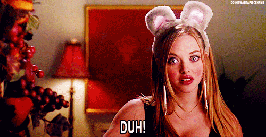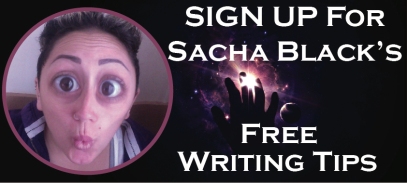 Editing is a bitch. I’ve written about the differences between editing and revising before. But my dear friend Ali recently taught me one of the best, most practically useful lessons I’ve ever learnt when it comes to editing.
Editing is a bitch. I’ve written about the differences between editing and revising before. But my dear friend Ali recently taught me one of the best, most practically useful lessons I’ve ever learnt when it comes to editing.
See, for a long time, I wrote, linearly, and then when I finished, I went back to the start and edited.
That’s good. But no matter how many times I did it, I still found a shit-tillion mistakes. Which resulted in a sort of crazed, goggle eyed, fuzzy haired – I’m going to commit arson on my manuscript – type look. It wasn’t pretty, my hairs curly enough thanks.
So, I listened to Ali and started tweaking the method to suit me. I’m going to share this editing trick with you, and hopefully it will help you to clean up your scripts too.
The fundamental problem with editing, is that we know our stories. We know our stories as well as we know how to breathe. It’s in-our-blood fundamental. Which means, we’re not subjective.
Getting any kind of objectivity over your manuscript is like trying to use your dominant hand, to cut off your dominant hand! It’s awkward, it’s uncomfortable, and quite frankly, fucking painful.
There are a gazillion suggestions of how you can get objectivity:
- Take time away from your script
- Put your manuscript in a different font
- Print it out
- Read it out loud
 All great tips. All tips I’ve used with varying success. But I was still making one fundamental error. I was still reading my manuscript in a logical, front to back order.
All great tips. All tips I’ve used with varying success. But I was still making one fundamental error. I was still reading my manuscript in a logical, front to back order.
FAIL of capital proportions.
But Ali said: read backwards. Now I needed a bit more meat to that bone. If I actually read word for word backwards, I wouldn’t be able to edit a thing. It would read like turd. So here’s what I did.
- Started with chapter one like normal
- But started at the END of the chapter
- I read each individual paragraph forward in the normal way. But I started from the first word of the last paragraph in that chapter
- So the first thing I read is the last paragraph of a chapter
- Then I read the penultimate paragraph
- Then the paragraph above that
- I worked backwards till I reached the first paragraph of my chapter
Why does this work?
You’re forced not to read the story. You can’t. Because the story isn’t being played out for you any more. It’s disjointed, out of order, nonsensical and completely new to you.

Sacha’s obliterated manuscript!
Voila, you have objectivity.
I was skeptical at first, I didn’t see how I could pick up on any mistakes, when I wasn’t reading ‘the story’ how could I get a feel for flow or pace or anything for that matter?
Boy did I have to eat some extra sugar coated humble pie.
Never, and I do mean never, have I been so effective at picking up my own mistakes. It was like the fucking holy grail itself landed on my lap and let me guzzle super charged editing juice from its glorious cup. I mean, just look at the state of those pages. AND I ACTUALLY THOUGHT MY MANUSCRIPT WAS OKAY BEFORE! Wrong.
Wrong.Wrong. Wrong. Fucking Wrong.
You don’t have to print the pages off like I did, honestly, hand editing has taken me an inordinate amount of time. But much to my frustration, that’s just what works for me. I changed the font, read backwards and annotated. I have used enough sticky posts to wall paper the Earth’s crust, but that’s enabled me to write myself notes and questions where I’ve found plot holes, consistency issues, mistakes or character questions.
Here’s a non exhaustive list of the kinds of mistakes this method has enabled me to pick up despite not reading the story in a logical order:
- Characterisation problems
- Character consistency
- Plot holes
- Timeline errors
- Punctuation and grammar faults like: commas, apostrophes, capital letters, missed words, repeated words
- Over use of identical metaphors and similes
- Over/under exposition
- Over/under foreshadowing
- Sentence flow and pace
- Word order and sentence structure
Give it a go. Let me know how you find it and whether it works for you too. What editing tricks have you got up your sleeves? What’s the best trick anyone ever taught you? Let me know in the comments.
If you liked this editing tip, why not sign up to get even more juicy writing tips, straight to your mailbox?

All good stuff as usual, Sacha, but the best bit is – shit-tillion. What a great word!
LikeLiked by 1 person
haha thanks Colin, I rather liked that word too! :p
LikeLiked by 1 person
Whoa, I would never have thought of that. I’m almost at the stage of editing my next WiP so I definitely think I’ll give this a go (though knowing me I’ll probably try and literally read backwards!)
LikeLiked by 1 person
I know right. I hadn’t thought of it either and it makes SO much sense! I hope it works – let me know how you find it.
LikeLike
Will do!
LikeLiked by 1 person
A great technique, thanks for sharing! It’s a good method to use even when it’s not your own writing. I’ll definitely be using it on my editing jobs. P. S. On page 38, opening paragraph of Chapter 12, 3rd sentence, “twinge” should be “twinged” to match the past tense of the sentence. (Couldn’t resist, as good as your tip is, nothing trumps a stranger’s eye.) 🙂
LikeLiked by 1 person
Glad you like the technique.
Sorry – do you mean on the photo of my manuscript? I tried to make it blurry so it couldn’t be read! It’s not even close to being ready!
LikeLike
I will definitely use this advise when I ever get around to write my first novel…
LikeLiked by 1 person
Glad you found it useful
LikeLiked by 1 person
Perfect time to read your blog. I’m going over & over every page. I’ll give this ago tonight and let you know if it works for me. Thanks a million. 🙂
LikeLiked by 1 person
I hope it does Lorraine – it works for me 😀
LikeLiked by 1 person
I’m loving it, I’ve picked up on things that I had previously missed. Fantastic approach.
LikeLiked by 1 person
hurrah 😀
LikeLiked by 1 person
Nice idea, thank you for sharing. I also like to reverse outline my writing. Break it down into its basic elements, see what’s missing.
LikeLiked by 1 person
Glad you like it, I hope if you try it, it works for you 😀
LikeLike
Great tip. Shall use on my next edit. Thanks very much! 🙂
LikeLike
Glad you liked it, I hope it works for you
LikeLiked by 1 person
I’ve been using this trick recently and I can’t believe how well it works! Thank you so much for sharing it.
LikeLike
Amazing, I love that it works for you too 😀 😀 it literally revolutionised my editing. Although, I have now shifted to doing it on screen and changing the font as I found it took too long by hand
LikeLike